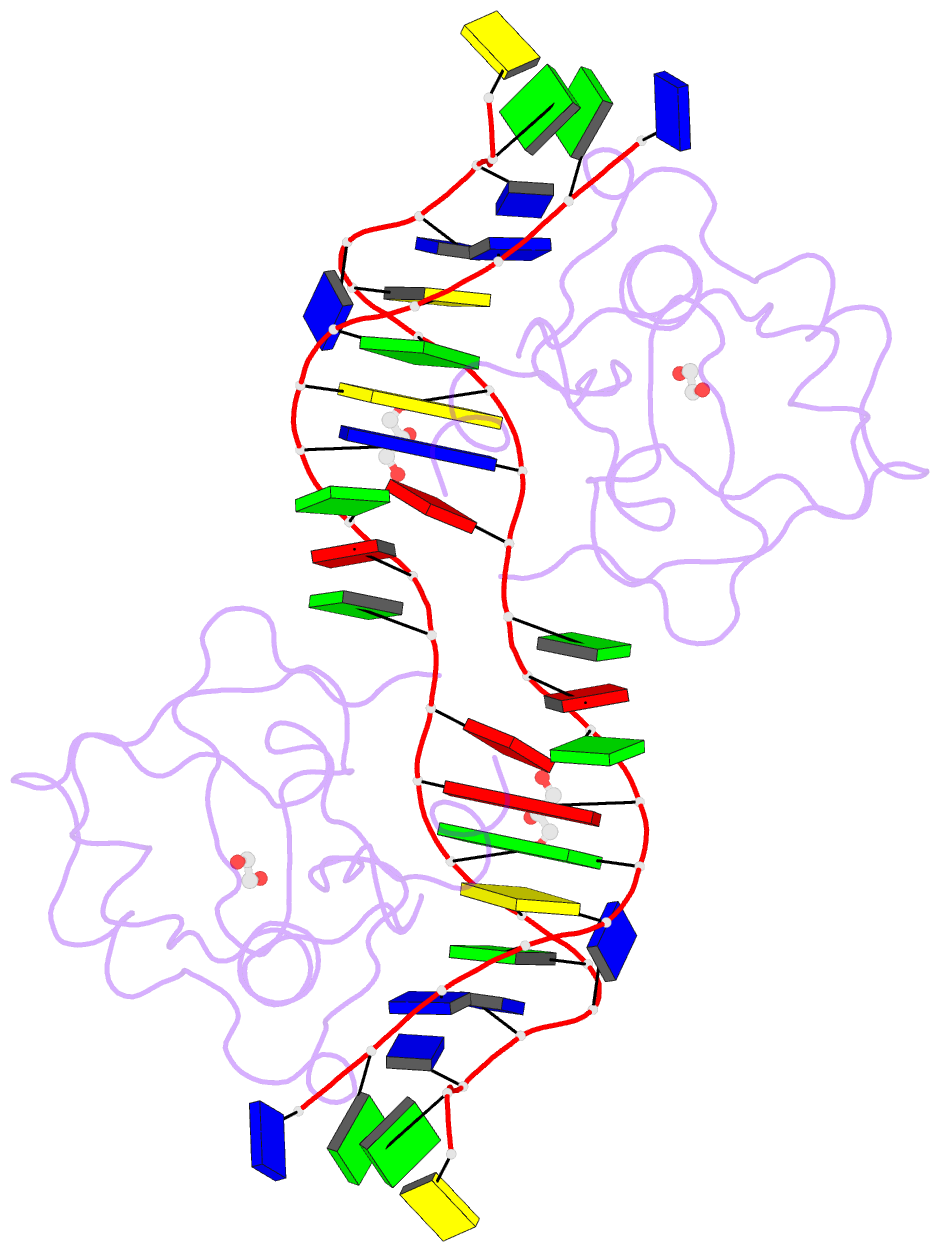Summary information and primary citation
- PDB-id
- 8tll; SNAP-derived features in text and JSON formats;
DNAproDB
- Class
- DNA binding protein-DNA
- Method
- X-ray (2.58 Å)
- Summary
- Cdca7 (mouse) binds non-b-form 26-mer DNA oligo
- Reference
- Hardikar S, Ren R, Ying Z, Zhou J, Horton JR, Bramble MD, Liu B, Lu Y, Liu B, Coletta LD, Shen J, Dan J, Zhang X, Cheng X, Chen T (2024): "The ICF syndrome protein CDCA7 harbors a unique DNA binding domain that recognizes a CpG dyad in the context of a non-B DNA." Sci Adv, 10, eadr0036. doi: 10.1126/sciadv.adr0036.
- Abstract
- CDCA7, encoding a protein with a carboxyl-terminal cysteine-rich domain (CRD), is mutated in immunodeficiency, centromeric instability, and facial anomalies (ICF) syndrome, a disease related to hypomethylation of juxtacentromeric satellite DNA. How CDCA7 directs DNA methylation to juxtacentromeric regions is unknown. Here, we show that the CDCA7 CRD adopts a unique zinc-binding structure that recognizes a CpG dyad in a non-B DNA formed by two sequence motifs. CDCA7, but not ICF mutants, preferentially binds the non-B DNA with strand-specific CpG hemi-methylation. The unmethylated sequence motif is highly enriched at centromeres of human chromosomes, whereas the methylated motif is distributed throughout the genome. At S phase, CDCA7, but not ICF mutants, is concentrated in constitutive heterochromatin foci, and the formation of such foci can be inhibited by exogenous hemi-methylated non-B DNA bound by the CRD. Binding of the non-B DNA formed in juxtacentromeric regions during DNA replication provides a mechanism by which CDCA7 controls the specificity of DNA methylation.





